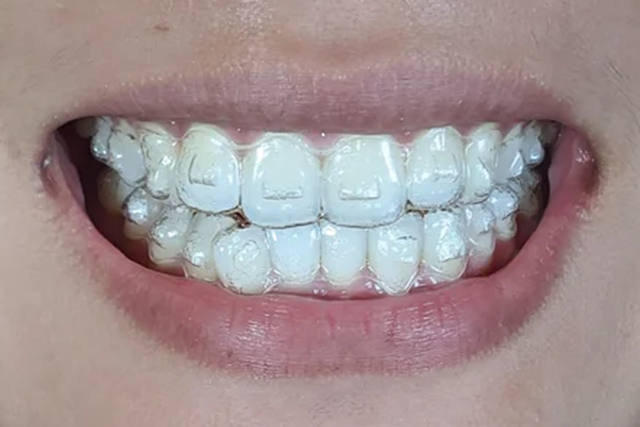Why Does My Invisalign Treatment Need Attachments?

Long Beach, CA – Patients love Invisalign treatment because it is the virtually invisible way to get the smile they’ve always wanted. But before choosing Invisalign, it’s important to understand everything that goes into the treatment. And that includes understanding that your treatment may include attachments.
What are Invisalign attachments?
Invisalign aligners are incredibly powerful – by exerting a gentle, constant force they gradually guide teeth to their new locations. However, in most cases, the aligners on their own cannot place the needed force to achieve certain movements. In order to do this, we use small buttons called attachments to help.
These attachments help us when the size, shape, or position of a tooth prevents it from being able to move properly with the Invisalign aligners alone. Attachments enhance the retention of the aligners and give us the extra boost in force and precision in directional movement that is needed.
What should you know about Invisalign attachments?
- They are small. People often choose Invisalign treatment for its high level of discretion, so they may worry that attachments will make their treatment more noticeable. Attachments are made of tooth-colored composite material that is bonded directly to the teeth. They are very small and will blend in well with your natural teeth so they won’t be very noticeable to others. However, sometimes attachments are needed on the front teeth, particularly for tipped, overlapping or uneven incisors. In this case, your treatment may be a bit more obvious (but still way more esthetic than braces!).
- The attachments are usually placed around the middle of the tooth to provide an anchor point for the aligner tray.
- Your orthodontist will determine the shape of the attachment that will be best for your teeth. This often depends on the type of movement that is trying to be achieved, but the attachment may be round, triangular, square, or rectangular.
- It may take a bit of time to get used to putting the aligners in with the attachments in place. The attachments click into the aligners at designated locations, so it does increase the retention of the aligners, As a result, it can take a bit of practice getting used to placing and removing them properly.
- You’ll need to take care to brush around the attachments. Plaque can build up around the attachments when eating, so be sure you take the time to clean around the attachments before putting your aligner trays back in to prevent decalcification spots and cavities from developing.
- Attachments make Invisalign treatment possible for a much wider range of orthodontic patients. Before attachments, Invisalign worked best for only mild to moderate malocclusions. Invisalign has poured millions of dollars into their research and development to improve their plastics and add attachments so that we can treat patients with more complicated issues and severe malocclusions.
- The process to have attachments placed is simple. Your orthodontist will prepare the surface of your tooth so the bonding agent can adhere properly. A template will mark where the attachments should go, and then a special curing light will ensure the material hardens properly. When we no longer need the attachments, we simply buff them off the surface of your teeth.
- Not every Invisalign patient will require attachments. For mild relapse cases, attachments are not always required, or few are needed. But if your orthodontist recommends them, it is for good reason – you will not be able to achieve your desired results without them.
Don’t let the thought of Invisalign attachments take away from your Invisalign experience. While it may slightly increase the visibility of your treatment, you will still enjoy the benefits that come along with Invisalign – comfort, removability, and efficiency.

